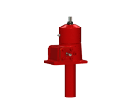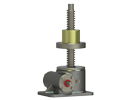Late last year, Design World editor, Danielle Collins, posted a great article about the “3rd Industrial Revolution.”
News flash—we’re in it, and 3D printers are leading the way.
Costs are coming down almost as fast as accuracy is increasing. From the industrial creation of finished parts, to the maker movement-led DIY creation of home models, 3D printers are increasingly becoming a more viable technology across different industries and applications.
Collins sorts printers into 3 basic categories, each with unique offerings and challenges:
- Desktop
- Generally 10x10x10 or smaller.
- Low cost kits to fully assembled models.
- Utilize FreeForm Fabrication, or FFF for printing.
- Relatively low-tech linear motion solutions; typically round shafts or belt-pulley systems.
- Prone to alignment issues, such as binding and torque spikes, as well as backlash.
- Prosumer
- Print areas around 18x18x18.
- FFF or Selective Laser Sintering (SLS) methods of printing.
- SLS offers more material choices including metal, ceramic and plastic.
- Ideal for part modeling or rapid prototyping.
- Rely mainly on linear rails and lead screws.
- Professional/Industrial Grade
- Print areas of up to a cubic meter.
- FFF, SLS, Stereolithography (SLA) or in some cases unique, proprietary, deposition methods.
- Highest resolution (layer thickness) as well as better surface finish and faster build times.
- High-precision parts, functional prototypes, finished parts and printed electronics.
- Utilized the most advanced linear motion solutions. But Collins notes that even these might not be accurate enough for some projects, and custom solutions will become necessary.
This handy chart, also from the article, helps lay out the features of all 3 types (click for a clearer view).
So, what has your experience with 3D printing been? Are you using them at all, investigating the options or already incorporating them as a part of your business?



